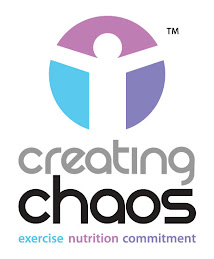Are Gyms Getting it Wrong?
I worked away this week and at times where travel is extensive, you have to be quite disciplined to squeeze in the chance to do some exercise. The irony being that when driving a lot, your body is in a greater need of movement with the sedentary nature of travelling yet often, there is less time than normal to fit it in.
However, I managed to find out where the nearest gym was and just about had time for 30 minutes of exercise which is enough time to fit in a decent session. Without naming this large commercial gym, their name claims to put fitness before everything else. Well, after Wednesday's visit, I'm not completely sure that I agree.
On stepping into the gym, I was pleased to find out that I could just pay for a one off session without being a member. £10 seemed on the pricey side for a single visit but that could be just my yorkshire-ness. I was pleased just to make the most of the time. However, I was rather surprised that I didn't have to complete any health forms, waivers or sign up documents, simply pay £10 and hand over my car keys in exchange for use of a locker.
Now, this particular chain isn't known for it's lavish facilities so I wasn't expecting to be stepping into the training arena for the GB Olympic team. But paying £10 for a single visit, you expect there to be a certain level of facility to justify the cost.
The club itself was a peculiar set up, the main gym area immediately ahead as you walk in, the weights area in a hidden room that I almost missed and a studio to the far side of the gym area. With little time available, I had a quick scout about to orientate myself and see what was available. Stepping briefly into what was an extremely crammed and busy free weight area, the level of hostility as a young male struck me immediately. As I opened the door and walked in, every single testosterone-fuelled guy turned and looked at me with little if any facial expression, not the most welcoming response.
I decided to warm up on a rower. 3 were available and my first choice seemed to have a poorly oiled chain making it awkward to get a good rhythm so, with the neighbouring rower being free, I jumped across. Oddly enough, the same issue remained, I'm not sure entry fee was used heavily on maintenance or equipment replacement.
As someone who trains instructors, even without trying to, I found myself taking note of what the gym instructors were doing. It was of no great surprise that these instructors had their t-shirt sleeves rolled to reveal a little more upper arm and spent most of their time chatting up the opposite sex.
I ended up putting myself in a little corner of a matted area and piecing a circuit together with a couple of dumbbells and a few other bits that had seen better days. The matts weren't particularly clean but generally training outdoors, a little dirt tends not to bother me. Half way through my circuit, a group of anteriorly focussed and rather oddly shaped men came and did some sort of 'ab' blast next to me. Whilst not eavesdropping, it was clear that their crude and very audible conversation was aimed at a number of females nearby on cardio-based equipment. If I could hear their comments, I was sure that many others, including the subjects of the conversation were aware of this. Yet somehow, it seemed to be the norm and was almost acceptable.
I tend not to visit gyms very often, mainly as and when I'm teaching courses or running events. Having started OutFit a few years ago, this less than satisfactory experience left me feeling rather smug which may come across a little odd.
Whilst OutFit may not be taking over the world anytime soon, I know for certain that our members feel comfortable and at ease when they come to sessions. I know that our instructors are all helpful and put members' needs first. I know that we always welcome new members and don't intimidate or present an image of superiority. I know that our session area is always free from litter and our equipment is in good working order. I know for certain that we don't tolerate sexist behaviour.
In an industry where constant research and headlines highlight epidemics of ill-health, you'd think we had a moral obligation to breakdown any and every barrier that could potentially stand in the way of someone participating in physical activity. However, it still appears that some organisations are concerned with celebrity endorsements and attendance metrics.
Q - How can the industry move forwards without listening to our customers?
A - We can't!
However, I managed to find out where the nearest gym was and just about had time for 30 minutes of exercise which is enough time to fit in a decent session. Without naming this large commercial gym, their name claims to put fitness before everything else. Well, after Wednesday's visit, I'm not completely sure that I agree.
On stepping into the gym, I was pleased to find out that I could just pay for a one off session without being a member. £10 seemed on the pricey side for a single visit but that could be just my yorkshire-ness. I was pleased just to make the most of the time. However, I was rather surprised that I didn't have to complete any health forms, waivers or sign up documents, simply pay £10 and hand over my car keys in exchange for use of a locker.
Now, this particular chain isn't known for it's lavish facilities so I wasn't expecting to be stepping into the training arena for the GB Olympic team. But paying £10 for a single visit, you expect there to be a certain level of facility to justify the cost.
The club itself was a peculiar set up, the main gym area immediately ahead as you walk in, the weights area in a hidden room that I almost missed and a studio to the far side of the gym area. With little time available, I had a quick scout about to orientate myself and see what was available. Stepping briefly into what was an extremely crammed and busy free weight area, the level of hostility as a young male struck me immediately. As I opened the door and walked in, every single testosterone-fuelled guy turned and looked at me with little if any facial expression, not the most welcoming response.
I decided to warm up on a rower. 3 were available and my first choice seemed to have a poorly oiled chain making it awkward to get a good rhythm so, with the neighbouring rower being free, I jumped across. Oddly enough, the same issue remained, I'm not sure entry fee was used heavily on maintenance or equipment replacement.
As someone who trains instructors, even without trying to, I found myself taking note of what the gym instructors were doing. It was of no great surprise that these instructors had their t-shirt sleeves rolled to reveal a little more upper arm and spent most of their time chatting up the opposite sex.
I ended up putting myself in a little corner of a matted area and piecing a circuit together with a couple of dumbbells and a few other bits that had seen better days. The matts weren't particularly clean but generally training outdoors, a little dirt tends not to bother me. Half way through my circuit, a group of anteriorly focussed and rather oddly shaped men came and did some sort of 'ab' blast next to me. Whilst not eavesdropping, it was clear that their crude and very audible conversation was aimed at a number of females nearby on cardio-based equipment. If I could hear their comments, I was sure that many others, including the subjects of the conversation were aware of this. Yet somehow, it seemed to be the norm and was almost acceptable.
I tend not to visit gyms very often, mainly as and when I'm teaching courses or running events. Having started OutFit a few years ago, this less than satisfactory experience left me feeling rather smug which may come across a little odd.
Whilst OutFit may not be taking over the world anytime soon, I know for certain that our members feel comfortable and at ease when they come to sessions. I know that our instructors are all helpful and put members' needs first. I know that we always welcome new members and don't intimidate or present an image of superiority. I know that our session area is always free from litter and our equipment is in good working order. I know for certain that we don't tolerate sexist behaviour.
In an industry where constant research and headlines highlight epidemics of ill-health, you'd think we had a moral obligation to breakdown any and every barrier that could potentially stand in the way of someone participating in physical activity. However, it still appears that some organisations are concerned with celebrity endorsements and attendance metrics.
Q - How can the industry move forwards without listening to our customers?
A - We can't!



+.jpg)

